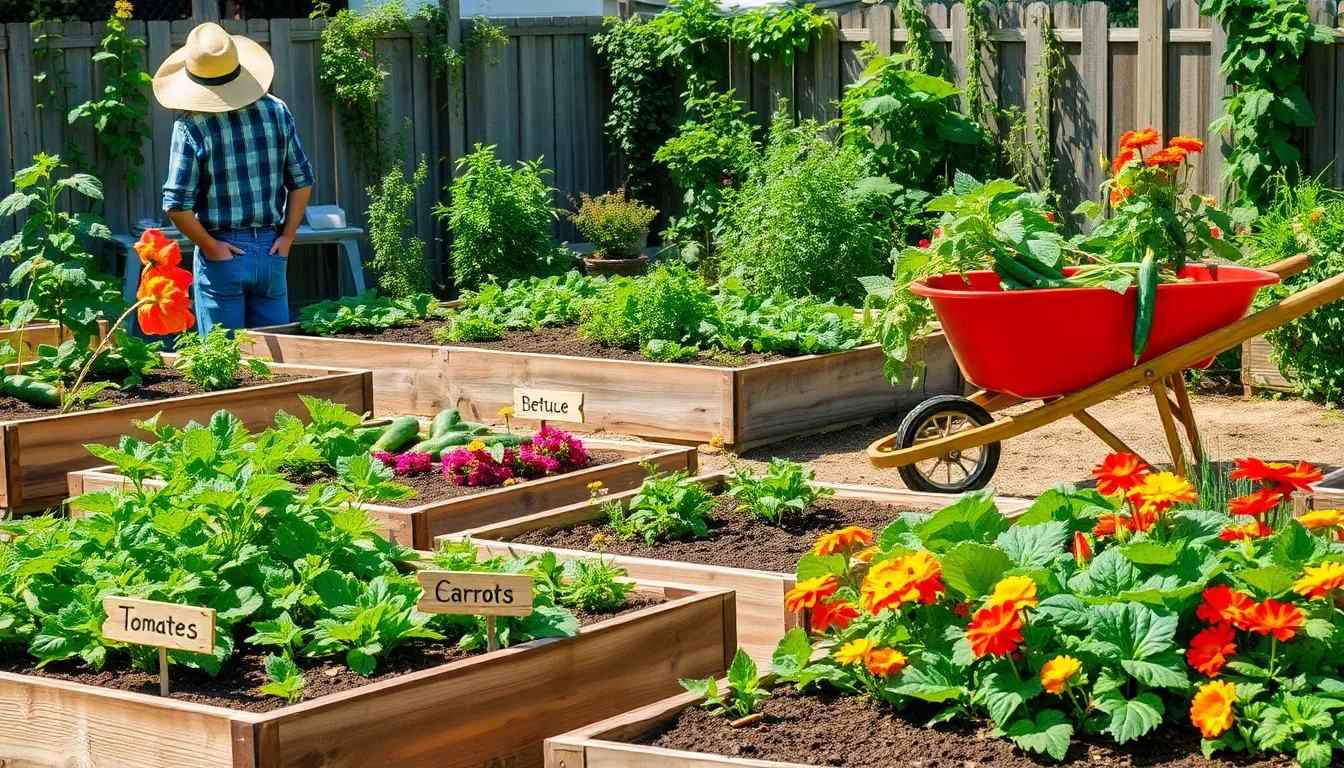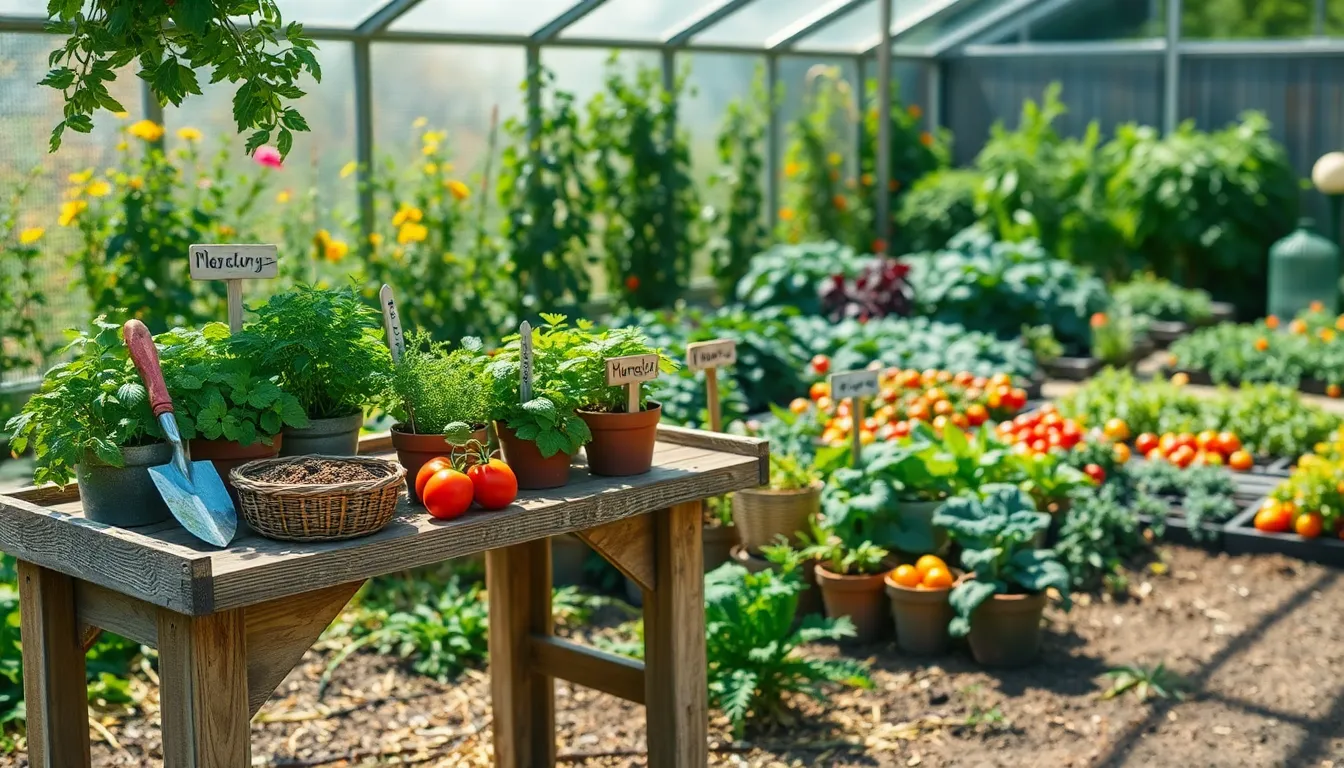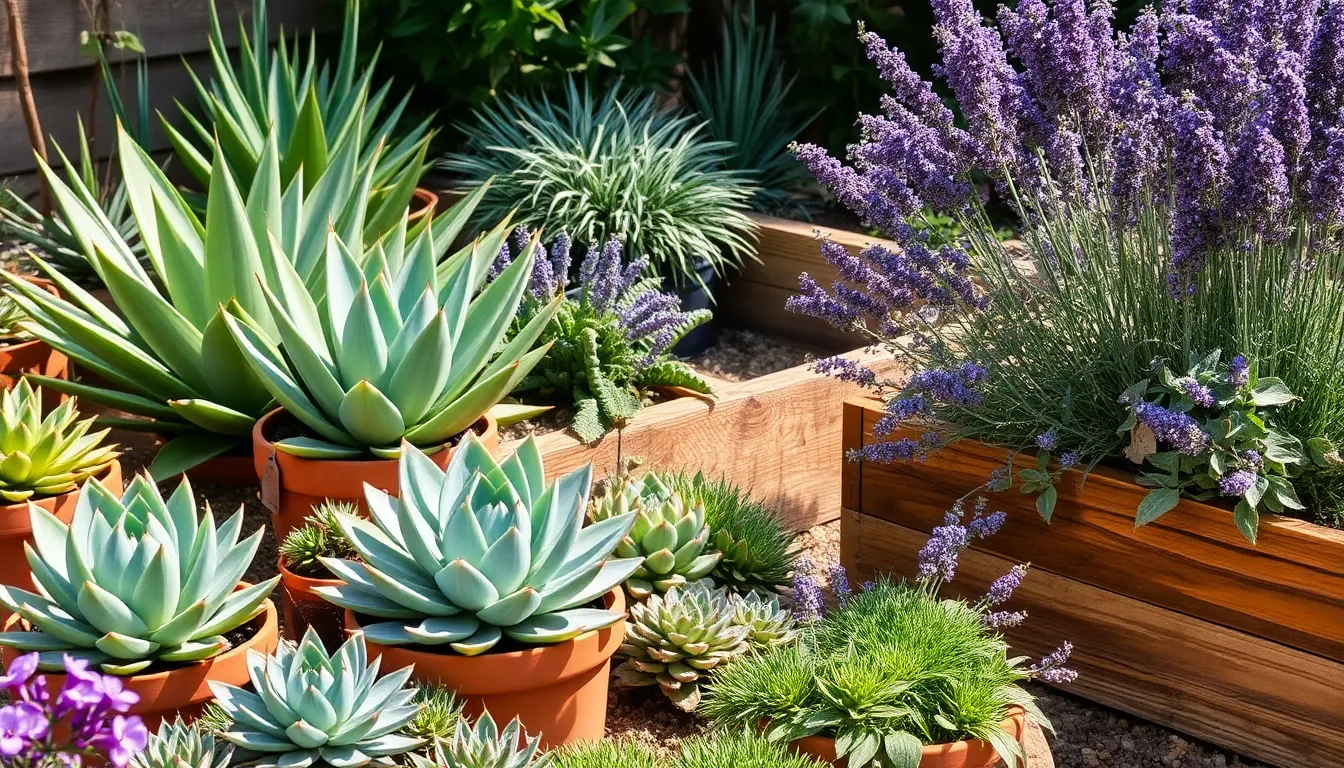Gardening has a magical way of transforming not just our landscapes, but also our spirits. Whether you’re planting your very first seedling or have a flourishing garden that could rival Eden, the journey of nurturing plants organically brings joy and a profound sense of achievement. “10 Productive Organic Gardening Tips” is your companion on this delightful adventure, crafted to offer you indispensable techniques that promise a bountiful harvest.
In this guide, you’ll discover strategies that harmonize with nature, ensuring your garden flourishes without compromising the ecosystem. From enriching the soil to mastering pest control naturally, each tip is designed to boost your garden’s productivity while keeping it eco-friendly. You’ll gain confidence as you see your plants thrive, knowing that your green thumb is contributing to both the planet’s health and your own happiness. So, roll up your sleeves and prepare to revel in the rewards of successful gardening, as these tips empower you to create an organic haven right in your backyard.
Rotate Crops Annually for Health
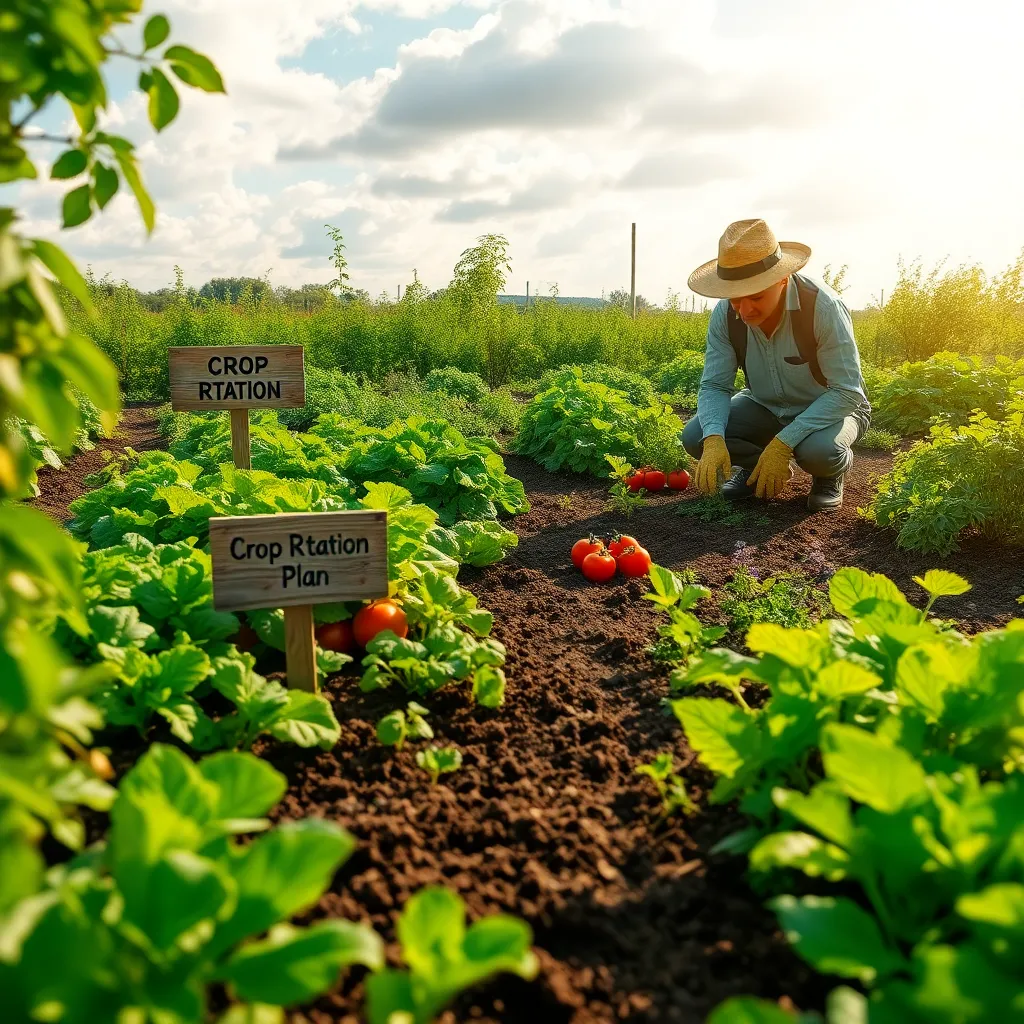
Rotating crops annually is a fundamental practice for maintaining soil health and reducing pest issues. By changing the location of your plants each year, you can prevent the buildup of diseases and pests that are specific to certain crops.
Begin by grouping plants from the same family together, such as tomatoes, peppers, and eggplants, and rotate them with different families like beans or root vegetables. This practice not only disrupts the life cycles of pests but also helps balance nutrient levels in the soil, as different plants have varying nutrient needs.
To implement crop rotation effectively, divide your garden into sections and assign different plant families to each section annually. For instance, if you grew leafy greens in one area this year, plant legumes in that spot next season to enrich the soil with nitrogen.
Experienced gardeners can enhance this method by incorporating cover crops, such as clover or vetch, in the off-season to further improve soil structure and fertility. Cover crops help suppress weeds, reduce erosion, and add organic matter to the soil, making them a valuable addition to crop rotation strategies.
Compost Kitchen Scraps Regularly
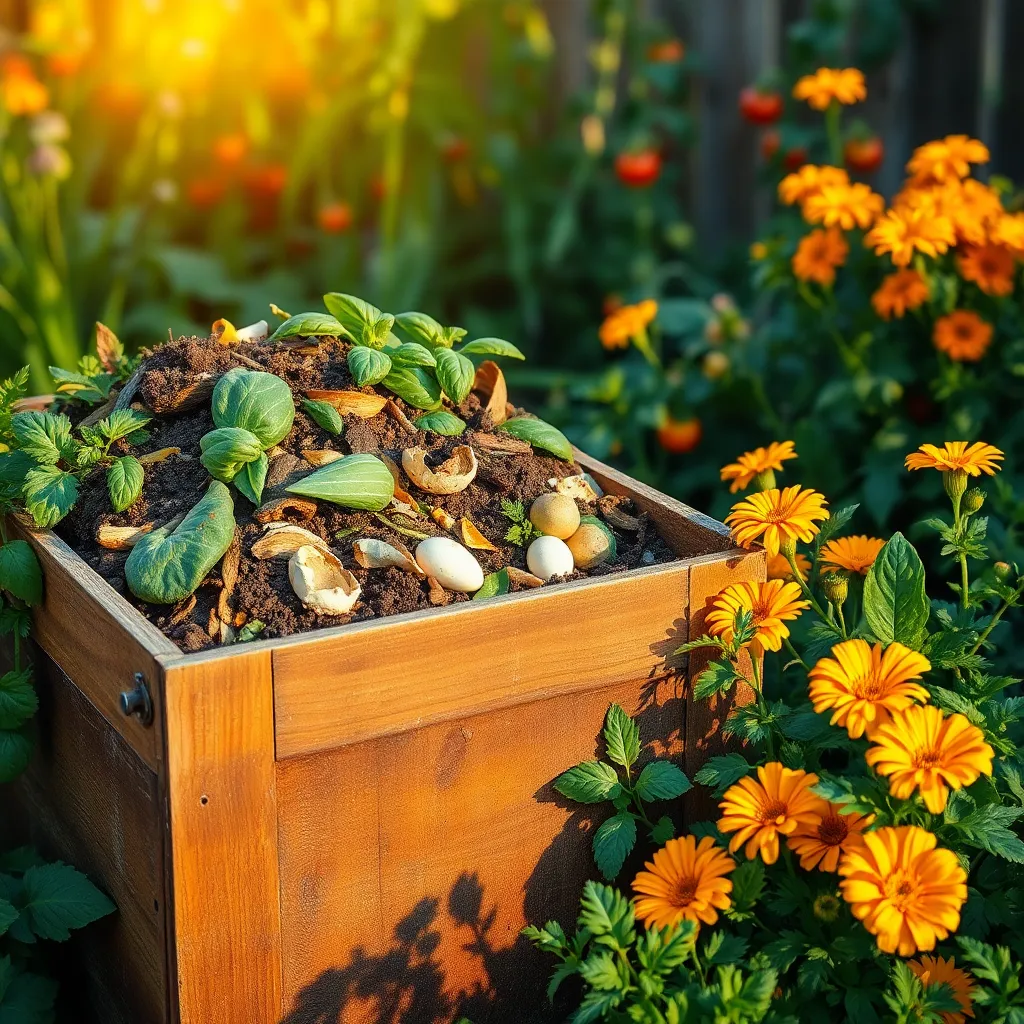
Turning your kitchen scraps into compost is an excellent way to enrich your garden soil organically. By regularly adding items like fruit peels, vegetable trimmings, and coffee grounds to your compost pile, you can create nutrient-rich compost that boosts plant growth.
Begin by setting up a small compost bin in your kitchen to collect scraps. Ensure the bin has a lid to prevent odors and pests, and empty it into your outdoor compost pile or bin frequently to maintain freshness.
Balance your compost by mixing green materials like fresh scraps with brown materials such as dried leaves or shredded newspaper. This combination helps maintain the right carbon-to-nitrogen ratio, essential for efficient decomposition.
Turning the compost pile every few weeks will aerate it and accelerate the composting process. Maintaining a moist but not soggy environment is crucial, so water your compost pile during dry spells to keep the microorganisms active and productive.
For more advanced composting, consider adding crushed eggshells and small amounts of grass clippings. These additions can enhance calcium availability and provide extra nitrogen, benefiting your plants even more when the compost is ready to use.
Mulch to Retain Soil Moisture
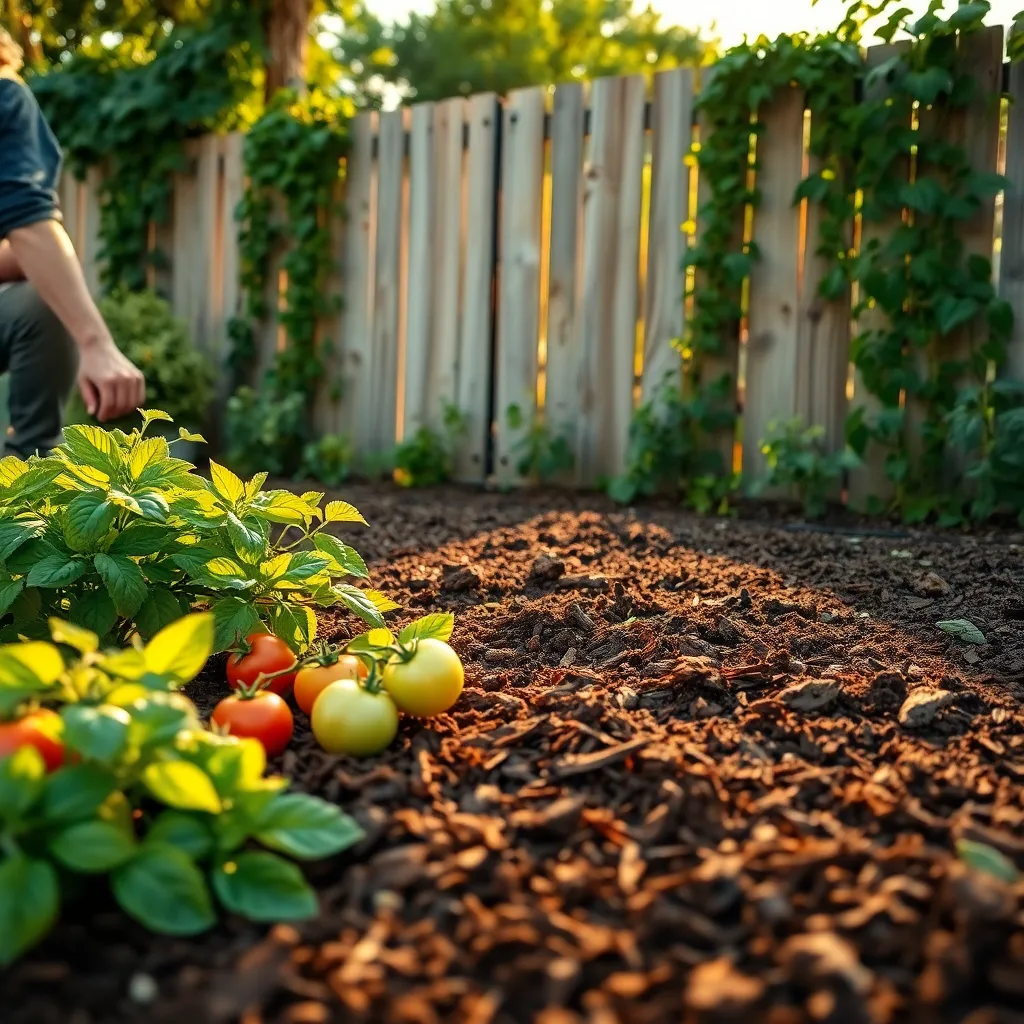
Mulching is a simple yet highly effective method to conserve soil moisture, making it an essential practice for any organic gardener. By covering the soil with mulch, you can significantly reduce evaporation, ensuring that your plants have adequate moisture even during dry spells.
Organic mulches like straw, wood chips, or shredded leaves not only help retain moisture but also improve soil fertility as they decompose. This dual benefit makes them an ideal choice for gardeners looking to boost both plant health and soil quality.
For beginners, starting with a layer of mulch about two to three inches thick is recommended to efficiently retain moisture and suppress weeds. Ensure that the mulch is spread evenly, and keep it a few inches away from the plant stems to prevent rot.
Experienced gardeners might experiment with different types of mulch combinations, such as mixing compost with straw, to enhance nutrient availability and soil structure. Regularly check and replenish mulch as needed, particularly after heavy rains or windy conditions, to maintain its effectiveness.
Plant Companion Vegetables Together

Companion planting is an effective way to enhance the productivity and health of your garden. By strategically planting certain vegetables together, you can naturally deter pests, improve nutrient uptake, and boost yields.
For instance, planting carrots with onions can help repel pests that typically target these roots. Onions release a strong scent that deters carrot flies, while carrots enrich the soil with nutrients that benefit onions.
Similarly, tomatoes and basil make excellent companions. Basil not only enhances the flavor of tomatoes but also repels insects such as whiteflies and aphids, making your garden more resilient.
To maximize the benefits of companion planting, consider the specific needs and growth habits of each plant. Take into account factors like sun exposure, watering frequency, and soil type to ensure both plants thrive in their shared environment.
Use Organic Pest Control Methods
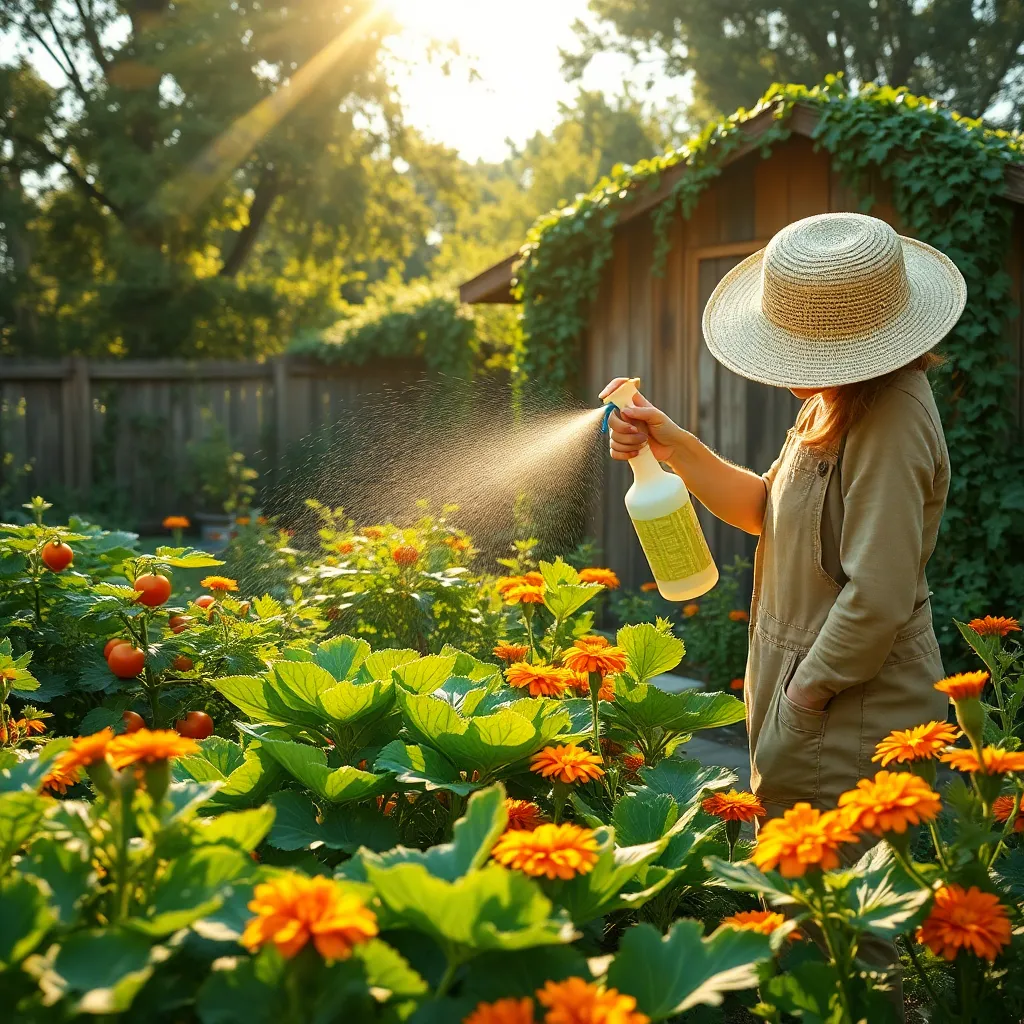
Organic pest control methods offer a safe and eco-friendly alternative to chemical pesticides. By using these methods, you can protect the beneficial insects in your garden while effectively managing pests.
Firstly, consider introducing natural predators like ladybugs and lacewings to your garden. These insects feed on common pests such as aphids and caterpillars, helping to maintain a balanced ecosystem.
Another effective strategy is to plant pest-repelling herbs like basil and marigold among your vegetables. These plants emit scents that deter pests, reducing the likelihood of infestations.
Additionally, homemade sprays can provide an extra layer of protection for your plants. A simple mixture of water, garlic, and chili can be sprayed on leaves to repel a variety of insects.
For a more advanced approach, create a bug hotel to attract beneficial insects that will naturally control pest populations. This structure provides shelter for insects like ground beetles and parasitic wasps, which can help reduce pest numbers.
Select Native Plant Varieties
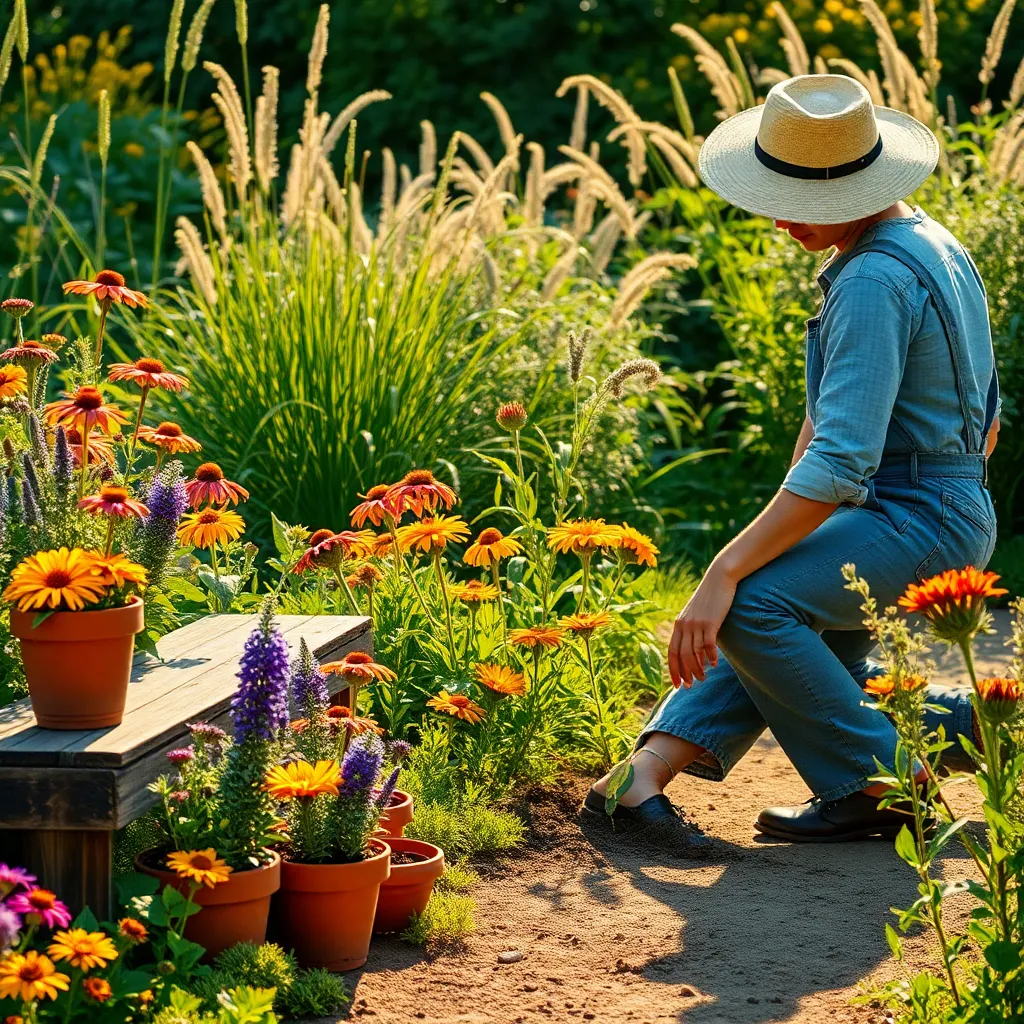
Choosing native plant varieties is a smart way to create a thriving, low-maintenance garden. These plants are naturally adapted to your local climate and soil, making them more resilient to pests and diseases.
Consider the specific growing conditions in your garden when selecting native plants. Look for plants that match your soil type, sunlight availability, and moisture levels to ensure they thrive without extra effort.
For beginners, start with easy-to-grow natives like coneflowers or black-eyed Susans. These plants require minimal care and attract beneficial pollinators, enhancing the biodiversity of your garden.
More experienced gardeners might try incorporating native grasses or shrubs to add texture and structure to their landscapes. Use deep watering techniques to establish these plants, as their root systems will grow more robust and drought-resistant over time.
Enrich Soil with Green Manure
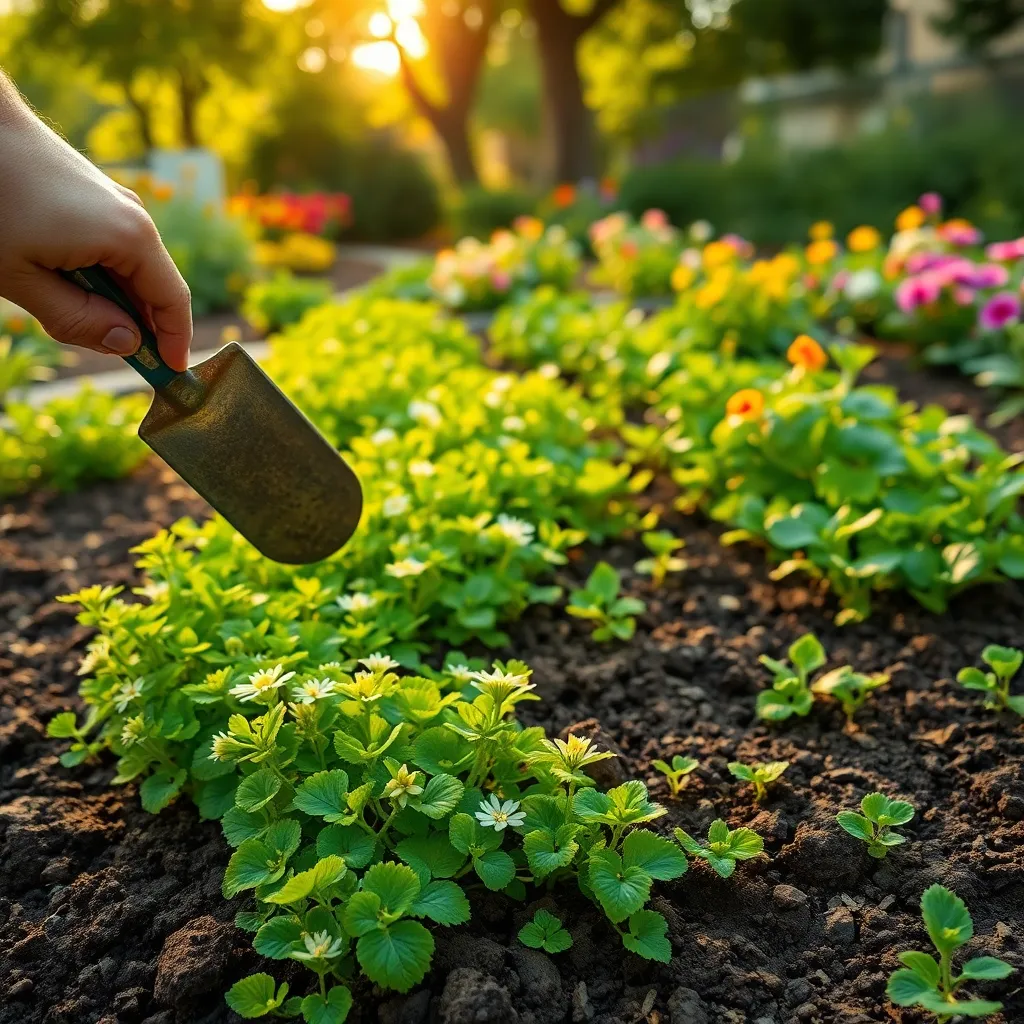
Introducing green manure into your garden is a fantastic way to boost soil health naturally. This technique involves growing specific plants that are then turned into the soil to enrich it with nutrients.
Legumes, such as clover and vetch, are popular choices for green manure because they fix nitrogen in the soil. This process not only improves soil fertility but also enhances its structure and moisture-retaining capabilities.
To get started, sow green manure seeds in bare patches of your garden at the end of the growing season. Allow them to grow until just before flowering, then cut them down and incorporate them into the soil using a spade or garden fork.
For the best results, wait a few weeks before planting your next crop to allow the organic matter to break down completely. This waiting period ensures that the soil is well-prepared to support healthy, robust plant growth.
Harvest Rainwater for Irrigation
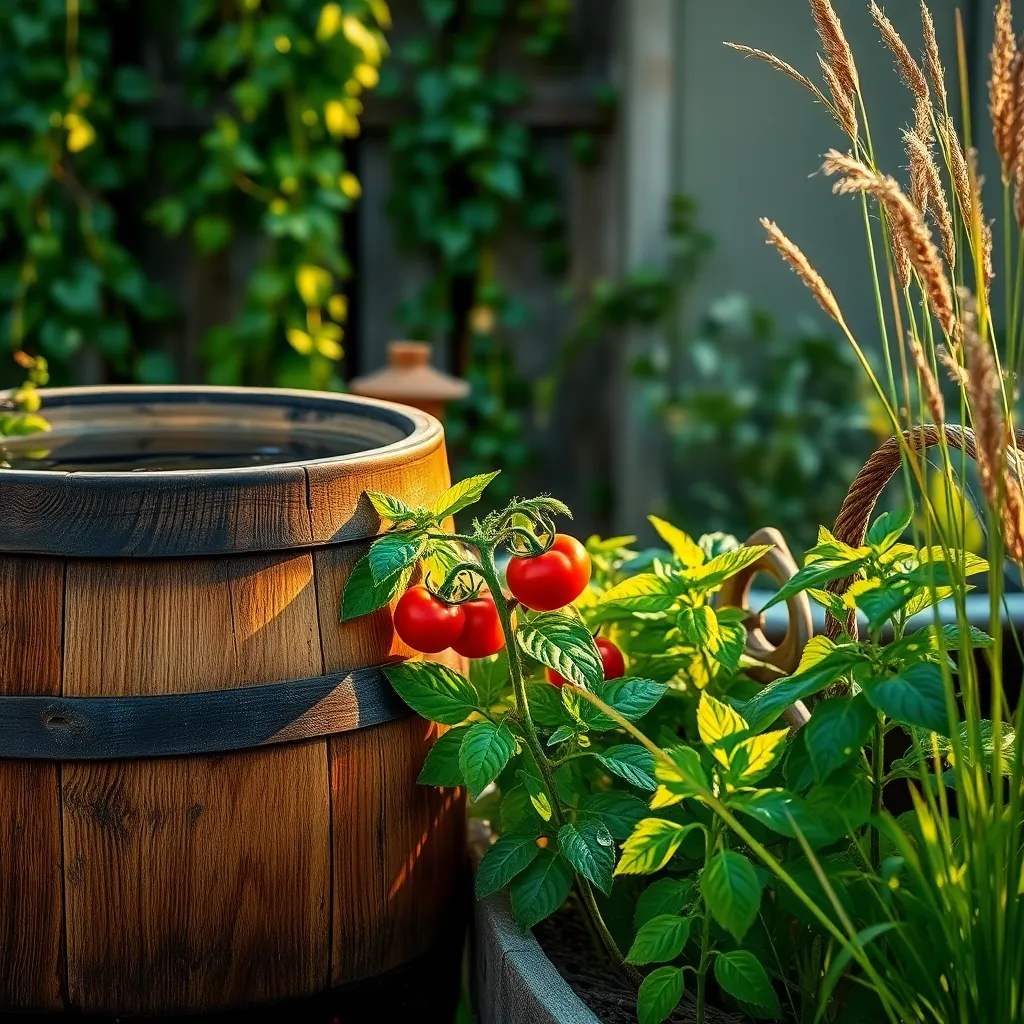
Consider adding a rainwater harvesting system to your garden setup to enhance your water conservation efforts. By utilizing rain barrels or larger cisterns, you can collect and store rainwater for future use, reducing your reliance on municipal water supplies.
Position your rain barrels under downspouts to effectively capture runoff from your roof. Ensure that the barrels are covered and have a spigot for easy access to the water, which can be used for both watering your plants and cleaning gardening tools.
Using rainwater for irrigation is not only eco-friendly but also beneficial for your plants, as it is free of the chemicals commonly found in tap water. For optimal results, apply rainwater directly to the soil at the base of your plants, which helps reduce evaporation and ensures that moisture reaches the roots where it’s needed most.
For gardeners looking to maximize their water conservation, consider setting up a drip irrigation system connected to your rain barrel. This allows for precise watering, minimizing water waste and promoting healthier plant growth by delivering water directly to the root zone.
Prune Plants to Encourage Growth
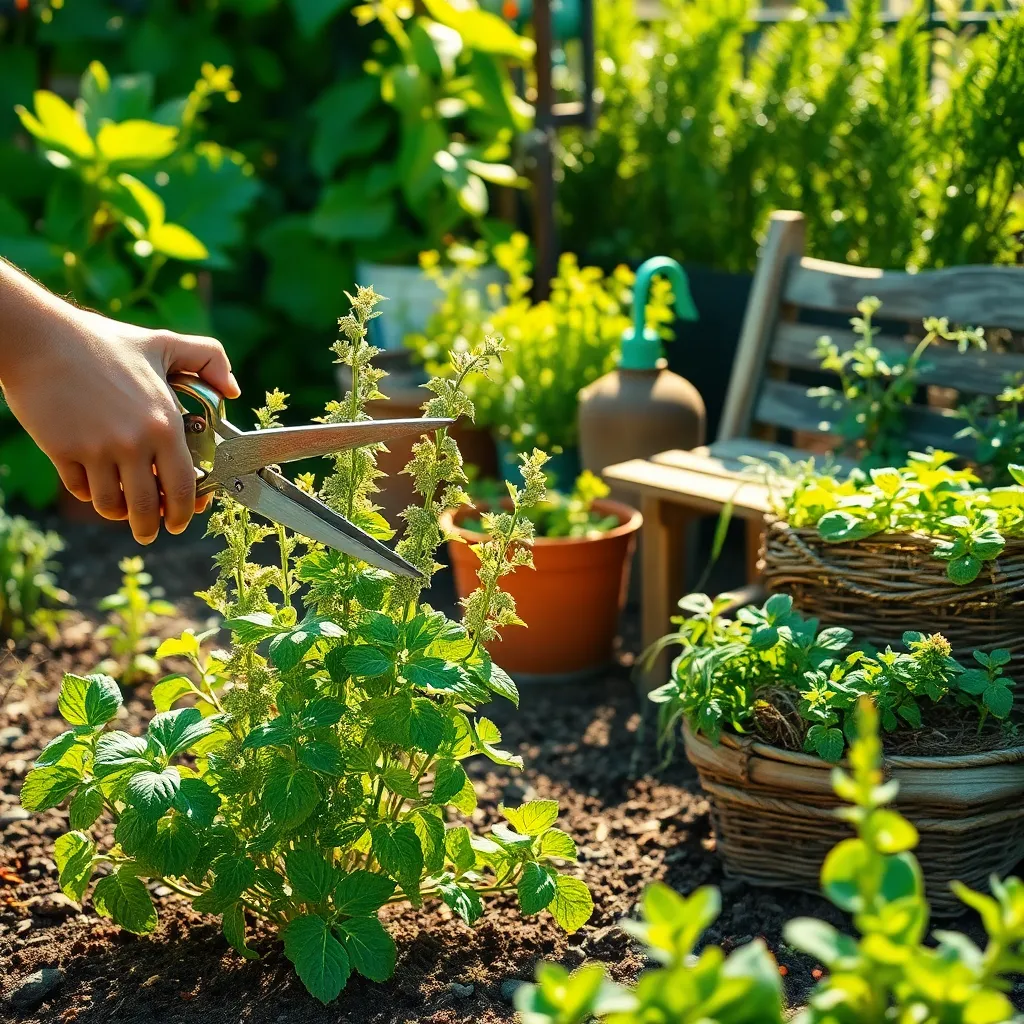
Pruning is an essential gardening technique that can significantly enhance plant growth and health. By removing dead or overgrown branches, you allow the plant to focus its energy on producing new, healthy growth.
It’s important to use the right tools for pruning, such as sharp, clean shears, to prevent disease transmission. Regular maintenance not only improves the plant’s appearance but also increases air circulation, reducing the risk of fungal infections.
Begin with removing any dead or diseased branches at the base of the plant. For beginners, a simple rule of thumb is to prune during the plant’s dormant season, typically late winter or early spring, to encourage vigorous growth in the upcoming season.
Advanced gardeners can employ techniques like thinning and heading back to shape plants and control size. Thinning involves removing entire branches to open up the plant’s canopy, while heading back means cutting branches back to a bud to promote a bushier appearance.
Test Soil for Nutrient Needs
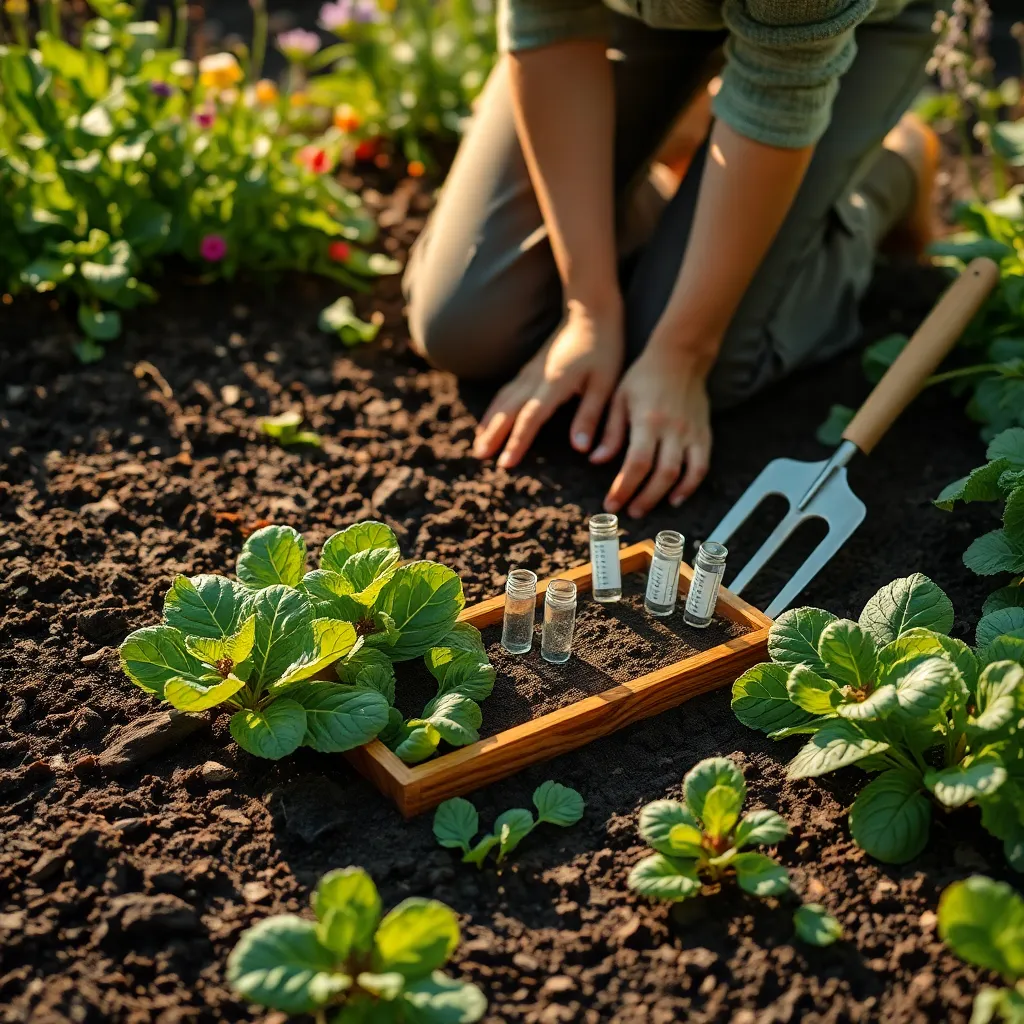
Understanding your soil’s nutrient needs is crucial for a thriving garden. Start by performing a basic soil test to determine the pH level and nutrient content.
To test your soil, you can use a home soil test kit available at most garden centers, which provides a quick snapshot of your soil’s health. Alternatively, sending a sample to a local cooperative extension service can offer a more comprehensive analysis.
Once you have your results, it’s important to adjust your soil based on its specific needs. If your soil is too acidic, consider adding lime to raise the pH, while sulfur can help lower pH levels in overly alkaline soils.
Incorporating organic matter like compost or well-rotted manure can improve soil structure and nutrient content. This organic matter not only enriches the soil but also enhances its ability to retain moisture and support plant roots.
For more advanced gardeners, consider creating a soil amendment plan that includes organic fertilizers tailored to your plants’ specific requirements. Elements like nitrogen, phosphorus, and potassium are vital, so ensure they are available in balanced proportions.
Conclusion: Growing Success with These Plants
As we wrap up our exploration of ’10 Productive Organic Gardening Tips’, let’s reflect on how these insights can enrich your relationships. We delved into nurturing communication, cultivating patience, embracing change, and understanding each other’s needs, much like tending to a thriving garden. We emphasized the importance of consistent effort, mutual respect, and valuing diversity in perspectives. By setting boundaries, practicing gratitude, and fostering a supportive environment, you can cultivate a relationship that flourishes organically.
Now, take a moment to consider which of these principles you can apply today. Perhaps initiate a heartfelt conversation with your partner, or take a step back to appreciate the growth you’ve achieved together.
For continued growth and inspiration, bookmark this article as a handy guide to revisit these essential tips whenever needed. Remember, relationships, much like gardens, require ongoing care and attention. By integrating these organic principles into your daily interactions, you’re sowing the seeds for a resilient and thriving partnership. Embrace the journey ahead with optimism, knowing that with dedication and love, your relationship can blossom into its fullest potential.

